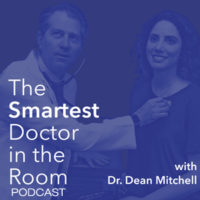Vitamin D: How to Get the Right Amount – And What it Means for Your Health

The summer is a wonderful time: daylight lasts longer, T-shirts and shorts are more comfortable to wear than heavy clothes, and the warmth of sunshine puts most of us in a good mood.
The Health Benefits of the Sun Are Enormous: it helps everything in nature grow including ourselves. The most well-studied and understood benefits of the sun are that it stimulates vitamin D production in our skin. Vitamin D is not only a vitamin but also a hormone. It is involved in building strong bones, heart function, blood sugar control, and immunity. Vitamin D is frequently called “The Sunshine Vitamin” because it is known that sun exposure directly correlates with vitamin D levels.
So, How Do You Get the Right Amount of Vitamin D for Optimal Health?
Smart Sun Exposure
We do hear a lot about skin cancer and the increased risk due to UVB exposure from the sun. The sun is associated with increased skin cancers because the ozone layer has diminished with the use of chemicals from our environment. However, this doesn’t mean sunlight should be avoided altogether. Sunscreens are helpful in decreasing UVB penetration, but the really smart way to get healthy sun exposure is to try and limit your longer periods outdoors to before 11 am and after 4 pm. Twenty minutes of sun exposure during these hours is an excellent way to get the amount of vitamin D production that will give you optimal levels.
If you are at the beach or doing gardening during the height of the UV index it is smart to cover your head with a hat and wear long sleeve shirts or pants to protect your skin. Sunscreen on your face is always a good idea if you want to avoid age spots and wrinkles.
The sunscreens that I prefer are typically around SPF 40 – this usually includes zinc oxide a superb skin protector and when you go above 45 or 50 SPF you just get a lot more chemicals that can be irritants or allergens. The key is to put the sunscreen on at least 20 minutes before outside exposure. Remember, swimming will wash off some of the sunscreens and it will need to be reapplied.
The Benefits of Vitamin D and What’s a Good Level?
The Mayo Clinic Proceedings June 2018 issue, published a landmark study showing the wide benefits of achieving good vitamin D levels in the blood. The journal demonstrated lower rates of colon cancer, breast cancer, cardiovascular disease and Type 2 diabetes in patients with higher vitamin D levels.
Vitamin D levels are considered deficient if they are below 20 IUs (international units). Levels between 20 and 30 are insufficient and levels above 30 are considered adequate. I have looked at different sources and levels are most likely optimal in the ’50s to 60’s range.
For most people to achieve this level they will need a combination of at least 20 minutes of sun exposure during the summer months and taking supplemental Vitamin D about 4,000 IUs. The typical RDA of 400 units is simply not enough to do the job. I also prefer patients to take a liquid Vitamin D preparation (ex. Bluebonnet brand or Pure encapsulation) because these can be placed under the tongue(sublingual) and go right into the bloodstream. Vitamins that are swallowed need to be fully digested and then go to the liver where they are detoxified and go back into the circulation- typically 30%. Also, very high doses of vitamin D- the 50,000 unit dose- has not been shown to be beneficial; it’s apparently too high a dose for the body to handle at once.
Final Thought

Vitamin D is associated with many different health benefits but is it possible it is just a marker of one’s outdoor exposure. Optimal vitamin D levels are more likely of the physically active individuals, engaged in healthy outdoor activities. The answer to achieving long-standing good health means going back to nature- vitamin D may be telling you to get some fresh air.
– Dr. Dean Mitchell, M.D.
Mitchell Medical Group in NYC & Long Island
About the Author – Dr. Dean Mitchell, M.D.
Dr. Dean Mitchell M.D. is a Board-Certified Allergist and Immunologist based out of NYC. He graduated from the Sackler School of Medicine and completed training at the Robert Cooke Allergy Institute in New York City. He is also a Clinical Assistant Professor of Clinical Immunology at Touro College of Osteopathic Medicine, a fellow of the American Academy of Allergy, Asthma and Immunology, and the author of Allergy and Asthma Solution: The Ultimate Program for Reversing Your Symptoms One Drop at a Time. Dr. Dean Mitchell, M.D. has also been featured in The New York Times, The Huffington Post, Fitness Magazine, Dr. Oz and News NY 1. Dr. Mitchell also hosts the podcast The Smartest Doctor in the Room – a combination of a lively, personal and in-depth interview with top healthcare specialists.
References:
Holick, Michael F. “The Death D-fying Vitamin.” Mayo Clinic Proceedings, June 2018 Volume 93, Issue 6, Pages 679-681.
https://www.mayoclinicproceedings.org/article/S0025-6196(18)30313-6/fulltext


